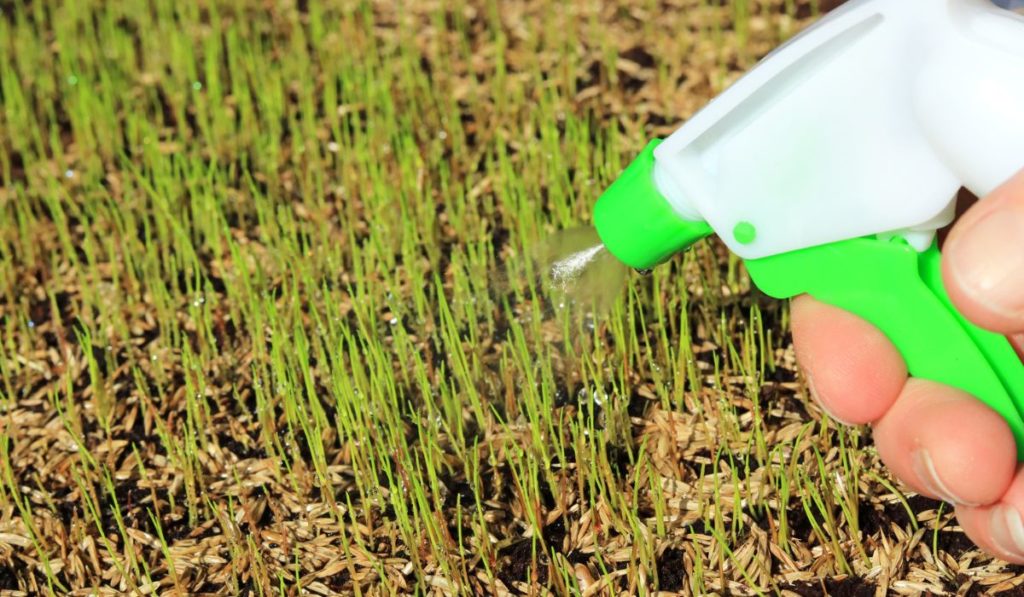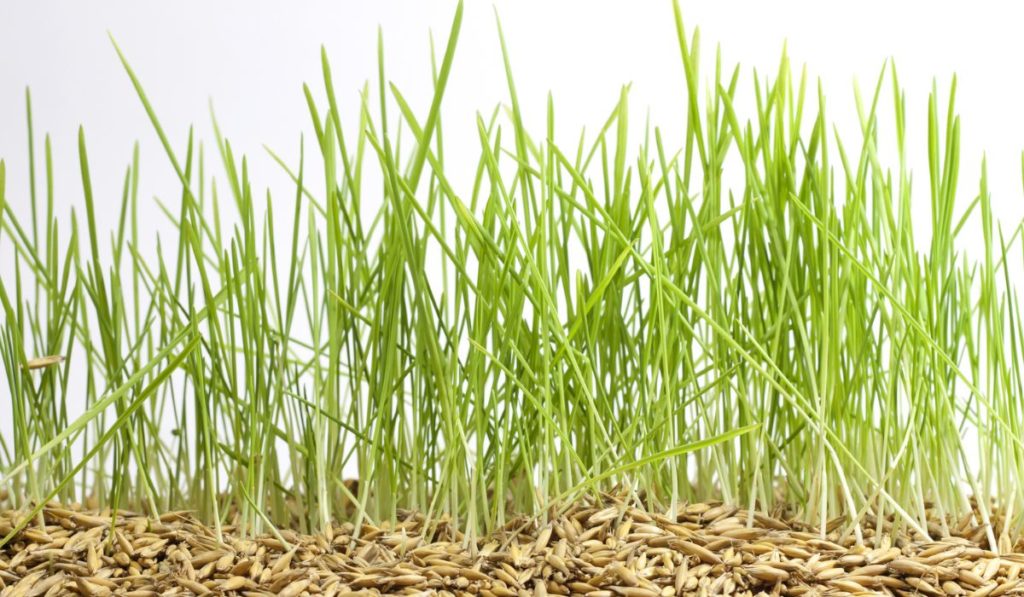A vibrant, lush lawn might seem difficult to achieve and tedious to grow and maintain, but it’s actually not too hard as long as you know what to do. Understanding the watering needs of new grass is the first step toward achieving a beautiful lawn.
Water grass seeds right after planting them and keep the top 3-4 inches of soil moist. Water them two times a day for 10 minutes in the early morning, late afternoon, or evening until they sprout. Then water them once a day for 10-15 minutes. Keep the grass moist until it’s 2.5-3.5 inches long.
Before you proceed, let’s take a closer look at everything you need to know about planting grass seeds, including when, how often, and how much to water them to get the best possible outcome.
What to Know Before Planting Grass Seed

Spreading grass seeds is more complicated than simply throwing a handful of seeds into the grass and waiting for them to grow. You need to keep a few things in mind before you start planting the seeds.
When to Plant
While you can generally plant grass seeds throughout the year, different kinds of grass grow much better during certain seasons and in specific regions.
Before you decide to plant grass seeds, make sure you know your area’s growing season (when the temperature, hours of daylight, and temperature ensure optimal growth). Typically, this is in the spring, once the last frost has passed.
You should also think about whether you want to plant cool-season or warm-season grasses. Cool-season grasses like bentgrass, perennial ryegrass, and tall fescue grow best in the cold, making autumn the ideal time to plant them.
Meanwhile, warm-season grasses like St. Augustine, centipede, and Bermuda thrive in warm water and are best for drought-prone places. The ideal time to plant them is early to late spring.
Type of Soil
Understanding the type of soil and its quality can help you choose the right kind of grass seed. The type of soil varies in each area; it can be clay soil, sandy soil, slit soil, or a mixture of all three.
Clay soil is heavy and dense, and you’ll have to add some nutrients to it before you can plant the seeds. It’s best for cool-season grasses like Kentucky bluegrass and tall fescue, and warm-season grasses like Zoysia and Bermuda grass.
Sandy soil is light, dry, and airy. Its pH is also lower than that of other types, and it typically lacks important nutrients. This type of soil also doesn’t retain moisture. Bahia, centipede, and zoysia grass grow fine in sandy soil.
Slit soil is usually the best option out of the three kinds of soil; it’s ideal for most kinds of grass seed since it retains moisture and is light. It typically is more fertile, and you’ll hardly need to make any adjustments.
Loam is a mixture of these three and can retain water quite well. Plus, it contains numerous nutrients and minerals, making it suitable for a variety of grass seeds.
Soil Condition
Certain types of grass are quite fussy about the pH of the soil, but the ideal pH is usually 6-7. That’s why if you have acidic soil, such as sandy soil, you’ll have to add ground limestone (on Amazon) to make it more suitable for use. Similarly, in the case of organic matter, you’ll have to add organic matter like sulfur, composted manure, or compost to increase the acidity.
Before you plant your seeds, make sure you test the nutrient levels and the pH with a test kit (on Amazon) so that you can make any required changes.
Soil Temperature
Before you plant the grass seeds, the temperature of the soil must be 55-75 degrees Fahrenheit. If the soil temperature is around 60-75 degrees during the daytime, the soil is warm enough to germinate grass seeds. Meanwhile, if the temperature is below 50 degrees Fahrenheit, the seeds will stay dormant.
How Often Does New Grass Seed Need to Be Watered?
Sufficient water is the key to a healthy and happy lawn, especially when it’s in the early growing stages. Whether you use a garden hose or a sprinkler system to water the new seed, it’s important to maintain moisture as soon as you sow the seeds. If the seeds dry out, they won’t germinate and will die.
You should water the seedlings two times a day (10 minutes per session) and continue doing so until you see the seeds start to sprout. Eventually, increase the morning watering session and cut down the evening one. Gradually, try to water the grass somewhere between 6 and 10 am, while it’s still cool.
Once the seeds start to sprout, water them deeper once a day while increasing the time of watering. Doing so will encourage the roots to extend further into the soil. Your goal should be to keep the top couple of inches of the soil moist until the grass grows up to 2.5-3.5 inches.
Once the grass is at a mowing height, you should thoroughly water it whenever the top inch becomes dry. Keep in mind that an established lawn usually needs around 1 inch of water a week, including rainfall.
What Time of Day Is Best for Watering Grass Seed?
Ideally, you should water the seeds in the early morning, late afternoon, or evening. At these times, the temperatures are relatively cooler and the winds are calm, ensuring better absorption of water in the ground.
Avoid watering the grass at night. This is because the lack of heat and sun encourages the water to collect in the soil and even around the grass roots, which eventually leads to fungal growth, rot, pests, and diseases.
How Long Does New Grass Seed Take to Grow?

How long new seeds take to grow depends on various factors, including the climate, the type of grass you plant, and where you live. For instance, if you plant the seeds sometime in the spring, you’ll have well-established grass at the beginning of summer. Meanwhile, if you plant them in the winter, such as in November, they’ll be fully grown by April.
Under optimal conditions, it takes around 1-3 weeks for grass seeds to sprout. It might take another 3-4 weeks for the grass to grow at mowing length. Generally, you can expect fully-grown, well-established grass two months from the seeding.
Tips for the Best Outcome
Once you sow the seeds, make sure you keep the top 3-4 inches moist. You should be able to do that by watering it for 5-10 minutes per session. If you underwater the grass, the roots will remain shallow and won’t be able to survive for long once the mercury rises.
When the seeds start to sprout, increase the watering time but reduce the frequency. Roughly 10-15 minutes of water should be good. And while it may not seem like enough for grass seed, remember that you only need a very small amount of water to sufficiently moisten the soil. Overwatering the grass can drown the seeds and render them unviable, so make sure you’re careful.
When watering the grass seeds, make sure you cover the whole lawn with a sufficient amount of water. Check the weather forecasts daily, and on days when there’s lots of rainfall, make sure you change your watering schedule accordingly.
A rain gauge like this one by La Crosse (on Amazon) can help you determine the amount of rainfall that fell, and you can use that to figure out the amount of water your grass needs. If you get a small amount of rainfall, you can just water the grass lightly that day. However, increase the watering frequency if it’s too dry.








